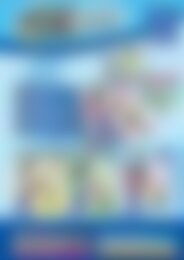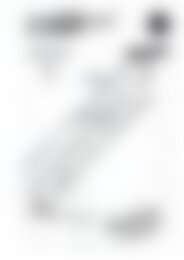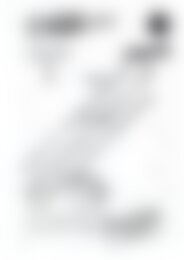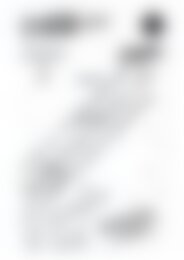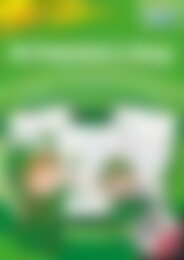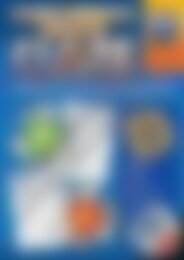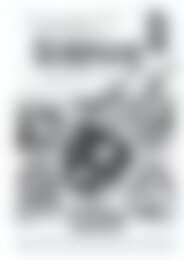RIC-20935 Early years Fairytales - Billy goats
Create successful ePaper yourself
Turn your PDF publications into a flip-book with our unique Google optimized e-Paper software.
Cross-curricular activities<br />
English<br />
• Read a version of ‘The three billy <strong>goats</strong> Gruff’. Refer<br />
to page 8. Encourage children who have their own<br />
copies of the story at home to bring them to show and<br />
display (or collect different versions from the library).<br />
Use these as a basis for a discussion about different<br />
texts of the fairytale, illustrations and authors. Ask the<br />
children to select their favourite and least favourite<br />
versions. (Literature)<br />
• Discuss and find other words which begin with the<br />
sound for the letter ‘b’ (billy) and ‘g’ (goat, Gruff).<br />
Find words that rhyme with ‘three’, ‘billy’, ‘goat’ and<br />
‘Gruff’, and clap and count the syllables in each word.<br />
(Language)<br />
• ‘Gruff’ is the family name of the three billy <strong>goats</strong>. Ask<br />
the children, or tell them if they do not know, what their<br />
family names are. Introduce the terms ‘given name’<br />
and ‘surname’ (or ‘family name’). Children may like<br />
to give their full names, including their middle names.<br />
(Language)<br />
• Discuss the story of ‘The three billy <strong>goats</strong> Gruff’ with<br />
the children and encourage them to answer questions<br />
about it. Begin with literal questions that have only<br />
one correct answer, such as ‘Which goat crossed<br />
the bridge first?’ then ask more evaluative questions<br />
requiring the inferring of information, such as ‘Which<br />
goat do you think was the bravest? Why do you think<br />
that?’ (Literature, Literacy)<br />
• Introduce the words ‘billy goat’, ‘nanny goat’ and<br />
‘kid’ and display them with pictures. Talk about the<br />
words, their meanings and the ways in which they<br />
are related. Extend this to a general discussion about<br />
the names of the male, female and young of other<br />
animals. Use these words and appropriate pictures cut<br />
from magazines to make a wall chart called ‘Mother,<br />
father and baby animals’. (Literacy)<br />
• Find the names of, and draw pictures of, things<br />
which begin with ‘tr’ like ‘troll’—truck, treasure, trunk,<br />
tracksuit, tractor, traffic, train etc. Write the words on<br />
labels and provide opportunities for children to ‘trace’<br />
them.<br />
• Introduce story sequence cards to the class and<br />
discuss what is happening in each. (Refer to pages<br />
9 and 10.) The children then work with a partner to<br />
sequence a set of cards in the correct order. Encourage<br />
the children to talk about what is happening in each<br />
picture and decide on a sequence. They can then take<br />
turns to retell the story by describing what is happening<br />
in each picture. (Literacy)<br />
• Talk about direct speech. Highlight the ‘speaking’<br />
parts of a big book about ‘The three billy <strong>goats</strong> Gruff’.<br />
Have the children practise saying the ‘speaking’ parts.<br />
(Language)<br />
• Talk about what a goat looks like; e.g. ‘woolly, ‘cute’;<br />
sounds like; e.g. ‘maa’, ‘trip, trap’; and acts like;<br />
e.g. ‘friendly’, ‘cheeky’. If desired, compile a simply<br />
worded and/or pictorial Y–chart. Capable children can<br />
read the words from the chart. (Literacy)<br />
• Read and discuss other stories about <strong>goats</strong> such as<br />
Aesop’s fable ‘The fox and the goat’ and informational<br />
texts about <strong>goats</strong>. (Literature)<br />
• Children find and cut out pictures of different types and<br />
colours of <strong>goats</strong> and display them. They take turns to<br />
choose that which they like best. They can describe<br />
the goat to a partner, a small group or the class and<br />
explain why they chose this particular goat. (Literacy)<br />
• Provide laminated cards, each with one word or<br />
name related to the story for children to use in the<br />
writing corner. Provide pictures and encourage<br />
children to match them to the words they are writing.<br />
(Language)<br />
• Talk about the use of capital<br />
letters for the beginning of<br />
special names such as ‘Gruff’.<br />
Create a goat from a large<br />
cardboard copy of capital<br />
‘G’. Use cardboard, coloured<br />
paper, crayons and googly<br />
eyes. Alternatively, cover a<br />
lower-case ‘g’ with Easter<br />
grass. (Language)<br />
• Draw or create grass patterns on a large sheet of art<br />
paper using paint and brushes or printing utensils.<br />
When dry, use as a background for paper-folded <strong>goats</strong><br />
or painted individual <strong>goats</strong> and a troll. (Literacy)<br />
2 <strong>Early</strong> <strong>years</strong> themes—<strong>Fairytales</strong>—The three billy <strong>goats</strong> Gruff www.ricpublications.com.au – R.I.C. Publications ®





